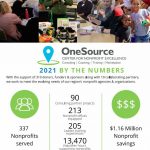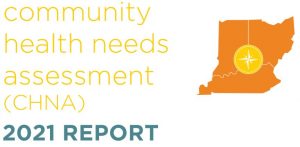
Month: February 2022
2021 OneSource Center Impact Document

NLIGC 2022-23 Leadership Development Schedule and Info

Free Child ID App Helps Identify Children in Emergencies
 Hamilton County Sheriff’s Office District 5 is urging parents to take advantage of a free child ID app that stores vital information, including photos, of their children right on mobile devices. The free app is called “FBI Child ID.” The FBI Child ID app, the first mobile application created by the FBI, provides a convenient place to electronically store photos and other vital information about children so that it’s literally right at hand when needed. Through the app, parents can show the pictures and provide physical identifiers such as height and weight to security or police officers on the spot. Using a special tab on the app, parents can also quickly and easily e-mail the information to authorities with a few clicks. More information is available here.
Hamilton County Sheriff’s Office District 5 is urging parents to take advantage of a free child ID app that stores vital information, including photos, of their children right on mobile devices. The free app is called “FBI Child ID.” The FBI Child ID app, the first mobile application created by the FBI, provides a convenient place to electronically store photos and other vital information about children so that it’s literally right at hand when needed. Through the app, parents can show the pictures and provide physical identifiers such as height and weight to security or police officers on the spot. Using a special tab on the app, parents can also quickly and easily e-mail the information to authorities with a few clicks. More information is available here.
Grant Funds Available for Lead Pipe Removal in Childcare Facilities
 In September of 2020, Greater Cincinnati Water Works (GCWW) announced it had been awarded $725,000 in state funding as part of Governor DeWine’s H2Ohio Initiative to replace lead service lines in licensed childcare facilities within the utility’s service area. Any ODJFS licensed childcare center with a lead service line in GCWW’s service area is eligible to have a lead line removed at no cost to them. Grant funding is available to providers who rent or own the facility. GCWW encourages licensed childcare providers to call 513.651.5323, visit Lead.myGCWW.org or email for more information and application details. More information available here.
In September of 2020, Greater Cincinnati Water Works (GCWW) announced it had been awarded $725,000 in state funding as part of Governor DeWine’s H2Ohio Initiative to replace lead service lines in licensed childcare facilities within the utility’s service area. Any ODJFS licensed childcare center with a lead service line in GCWW’s service area is eligible to have a lead line removed at no cost to them. Grant funding is available to providers who rent or own the facility. GCWW encourages licensed childcare providers to call 513.651.5323, visit Lead.myGCWW.org or email for more information and application details. More information available here.
Community Health Needs Assessment Released
 The 2021 Regional Community Health Needs Assessment recently was released. The report identifies the most pressing health needs in our region as well as top priorities such as investment in the workforce pipeline, diversity and health-related social needs such as housing and food. The report also found that differences in health outcomes are most common among people of color and those with lower education, lower income or those without or with insufficient health insurance.
The 2021 Regional Community Health Needs Assessment recently was released. The report identifies the most pressing health needs in our region as well as top priorities such as investment in the workforce pipeline, diversity and health-related social needs such as housing and food. The report also found that differences in health outcomes are most common among people of color and those with lower education, lower income or those without or with insufficient health insurance.


